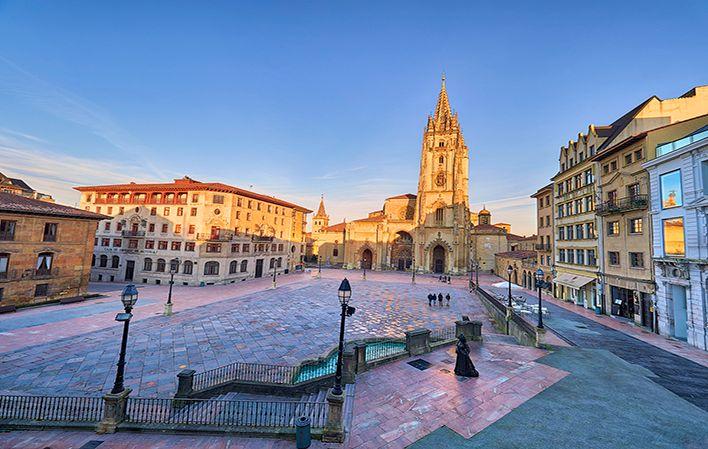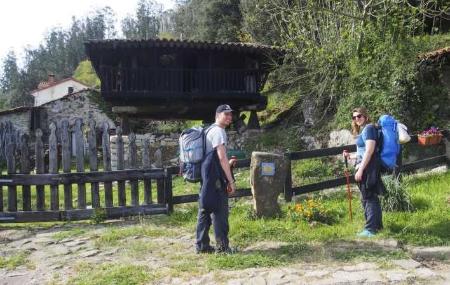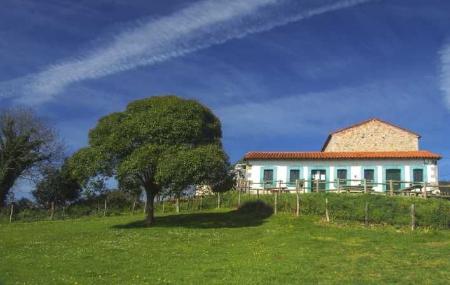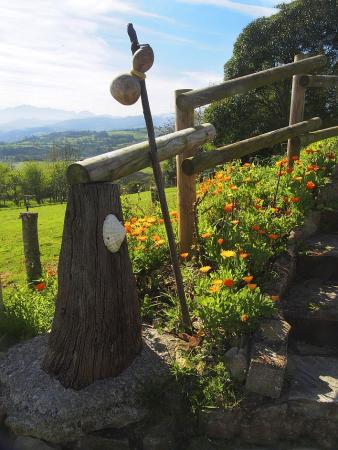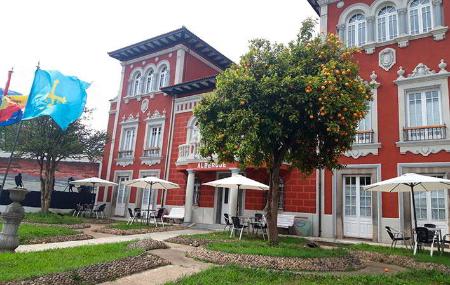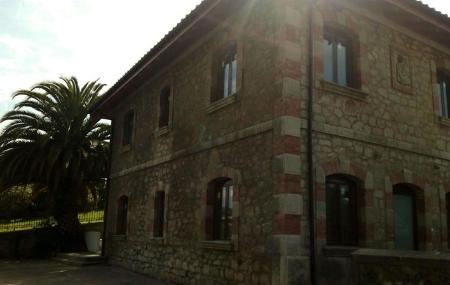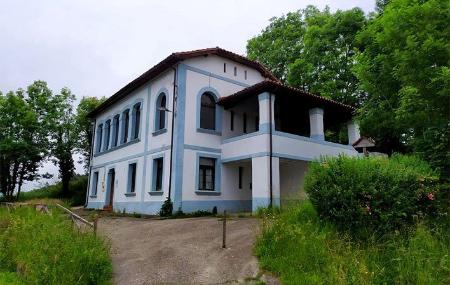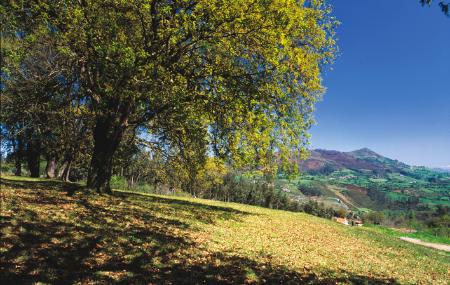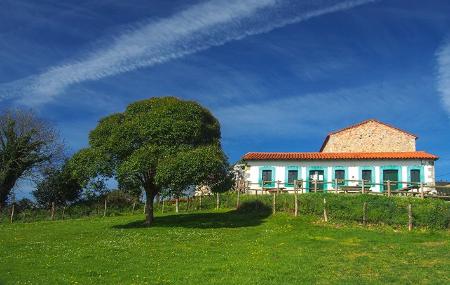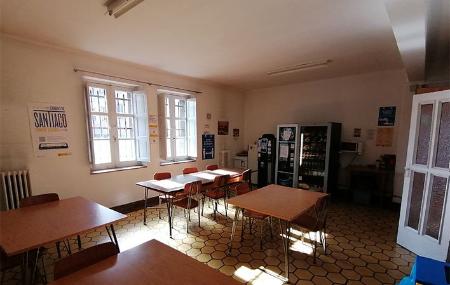Stage 1: Oviedo/Uviéu - Grau/Grado
26.0 Kms
The first stage of the Primitive Way links the city of Oviedo/Uviéu with the town of Grau/Grado, along 25.62 km that pass through the councils of Oviedo, Las Regueras and Grado.
It is a route without major difficulties, which in its first kilometres, after leaving the Asturian capital, runs through the foothills of Mount Naranco, in a more or less flat route, which finds its main incidents further on, with a steep descent between Llampaxuga and Lloriana and then with the ascent to Taraniellu, in Las Regueras, and the subsequent descent to Premoñu, starting then a practically flat route again that leads to the capital of the council of Grau/Grado.
The Pilgrims' Route to Santiago de Compostela is mostly on tarmac roads, although there is a significant percentage of the route on dirt, gravel or concrete paths. It is a varied stage, passing through cities such as Oviedo/Uviéu and Grau/Grado at the beginning and end of the route, respectively, as well as a good number of small villages and towns, such as Llampaxuga, Lloriana, Taraniellu, Premoñu or Peñaflor. There are also many sections in which the pilgrimage route runs through a purely natural environment, especially in the council of Las Regueras.
The Cultural Heritage is very rich in this itinerary, which begins next to the cathedral of Oviedo/Uviéu, declared World Heritage by UNESCO in 2015 for its link to the Way of St. James, a distinction that had already been achieved previously, in 1999, by the Holy Chamber, as an integral part of the pre-Romanesque architecture of Oviedo.
The Way crosses part of the historic centre of Oviedo, and then passes through the nineteenth-century expansion of the Asturian capital, where good examples of nineteenth-century residential architecture, clearly bourgeois, can still be seen.
The Way also passes near the old Provincial Hospice of Oviedo/Uviéu, a landmark of the Enlightenment. Further on, once the city of Oviedo/Uviéu has been left behind, the Pilgrim's Way enters a rural environment, where small chapels and churches abound, such as those of Llampaxuga, Lloriana or Premoñu, and the traditional constructions typical of the Asturian countryside, among which the hórreos and paneras (raised granaries) stand out, These are very abundant, for example, in the town of Peñaflor, in the council of Grado, a short distance from the capital of Moscona, the end of the stage, where there is a historic quarter of considerable interest, presided over by the Palacio de Valdecarzana, an Asset of Cultural Interest and an outstanding example of Asturian noble architecture from the modern period.
There are, obviously, many historical references to the passage of pilgrims along this route in medieval and modern times. In Oviedo/Uviéu there were several pilgrims' hospitals, including the hospital of San Juan, founded in 1096 just a few metres from the cathedral. In the council of Las Regueras there is evidence of the existence of a hostel in L'Escampleru, dating back to the 14th century, and of two pilgrims' hospitals in Premoñu and Peñaflor, on the border with the council of Grado, in whose capital was located the Hospital of Nuestra Señora de las Candelas, already documented in the 16th century.

